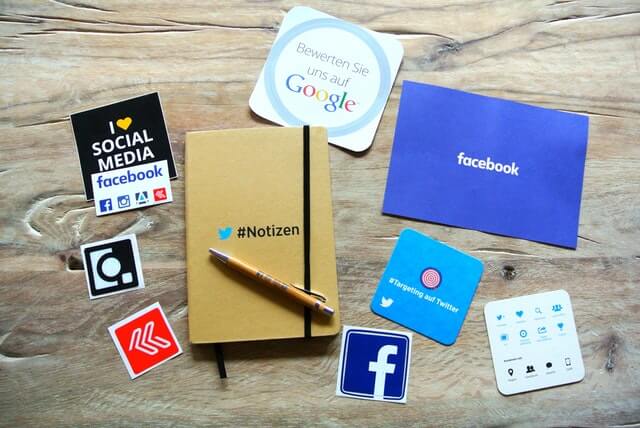Digital marketing. We’ve all heard the term, and we all have a reasonably clear picture in our heads of what it refers to. But just how clear is that picture?
For many businesses, digital marketing simply means having a presence online—be it their own site or (if they’ve taken the leap into the 21st century) through social media. But that’s not just a narrow definition, it’s one that ignores a number of powerful tools which increase visibility. On the other hand, if you’re a business who considers digital marketing to be an impenetrable thicket of indecipherable jargon, you need to reconsider just what digital marketing is.
What Is Digital Marketing?
At its heart, the philosophy behind digital marketing really isn’t that much different from traditional marketing. Nor is the message. It’s a question of how to effectively reach the right people with the right service at the right time.
But where traditional marketing methods relied on only four channels—print, TV, radio and physical promotional materials—digital marketing spans only one medium: the internet. And in order to reach an audience effectively, marketing efforts need to cross multiple channels within that greater digital spectrum.
Content Marketing
Content marketing differs from traditional advertising in that it’s not based on repeating the same message over and over again. Instead, content marketing relies on generating new and frequently updated material relevant to the scope of your business; material which can come in multiple forms, including blog posts, streaming media, tutorials and social media updates. It’s actually a fairly broad term, and one that can cover just about any form of digital outreach that doesn’t fall under the umbrella of an advertising campaign. Think of it as a value added bonus that informs your customers instead of persuading them.
Email Marketing
There’s an unfortunate tendency to equate email marketing with the sort of spam most of us receive daily (and most of us have enabled spam filters to catch). But the reality is that email marketing has been estimated to be up to 40 times more effective than other forms of digital marketing—and it doesn’t show signs of dying anytime soon. But an effective email campaign doesn’t consist of empty advertising repeated ad nauseum. Each email should be unique, informative and above all, valuable to your customers. Sales promotions, discounts and special offers are just one way in which your audience can feel like they’re part of your exclusive inner circle; and one area where email marketing has a greater advantage over other digital marketing strategies.
Mobile Marketing

It’s been estimated that mobile traffic will account for over 59 percent of all online interactions globally by 2020. And with the rise in mobile interactions, businesses can no longer afford to rely on web campaigns alone to launch an effective digital marketing strategy. While mobile marketing strategies do require tailoring optimization to better suit both device compatibility and screen resolution, the possibilities of mobile campaigns—from MMS to SMS to in-house apps—are as endless as digital marketing itself.
Pay-Per-Click Marketing
All pay-per-click (PPC) marketing refers to is the sponsored results you’ll typically find at the top of a Google or Bing search result page. They’re paid advertisements where businesses are only charged for each time a link to their business is clicked on as a result of a search. PPC is one of the more cost effective, quick and customizable ways to promote the visibility of your business, but there’s a right way of doing PPC marketing and an inefficient one. Many businesses will choose to leave PPC campaigns up to an agency who won’t bother reviewing their efficacy, instead choosing to rely on the same search terms every few months. Auditing both your campaign and the traffic you receive is a crucial element of PPC, and you need to ensure it reflects current trends in your customer base if you want to see any significant return on your investment.
Search Engine Optimization
One of the biggest mistakes businesses make about search engine optimization (SEO) is assuming it simply refers to a keyword string of search terms. While that can be a large part of SEO, it’s better to think of SEO as a series of best practices which increases your performance in search engines—and subsequently, your visibility. This can include anything from developing an image-centric site to backlinking to simply formatting content in a readable way. But most importantly, it means developing coherent and engaging content. Anything that will drive traffic to your site organically can be considered SEO. But its efficacy depends on generating consistent traffic—something you’re not going to attract by simply repeating a keyword string over and over again. Engaging with your customers is the key to SEO, and one which can take months of trial and error before you see results.
Social Media Marketing
Social media is by default… well, social. And what that means for your digital marketing campaign is directly engaging with your customers. All too often, businesses assume that simply tweeting several times a week or even paid advertising on Facebook are all it takes to market themselves on social media. And while that might increase your visibility, it won’t give your customers a look at the human face and voice behind your business. One of the biggest reasons for the social media explosion over the past 15 years has been the need for connectivity. Not just as consumers, but as peers. And if you can learn to relate to customers as peers, they’re no longer just your customer. They’re your partners.
Long term partners.
Are you looking for a digital marketing solution customizable for your business but don’t know where to start? Visit us today at No Joke Marketing.








